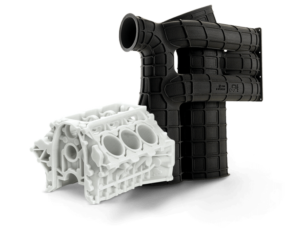Are Legacy Vendors Invested in Your Success? Mitigating Risk Through Vendor Diversification
Key Points:
- Rapid prototyping and technological advancements are driving the demand for diverse vendor options.
- Having too many vendors to choose from can lead to “vendor paralysis” and introduce supply chain risks.
- Building a network of trusted partners invested in your success helps mitigate risks.
- Relying solely on legacy vendors can be problematic if they face business disruptions.
- The 3-quote solution may not adequately vet partners for success.
- The COVID-19 pandemic highlighted vulnerabilities in supply chains.
- Unexpected disruptions can jeopardize your business if legacy vendors cannot sustain supply.
- Diversifying your network of partners reduces risk and enables better outcomes.
- Choose US-based suppliers and prioritize communication and collaboration with vendors.
- Vet domestic vendors for each manufacturing process and have backups in case of unexpected events.
- Break down silos and promote communication between internal teams and vendors.
- Invest time in building genuine relationships with vendors to stay informed and proactive.
Introduction
As manufacturing technologies advance, rapid prototyping is becoming increasingly popular. With this growing demand, the number of vendors is increasing, offering faster and easier quoting processes. While this may seem advantageous for companies striving to bring products to market quickly, an abundance of options can lead to “vendor paralysis” and introduce risks to the supply chain, project timelines, and personal goals.
Mitigating Risk Through Vendor Diversification
To mitigate risks throughout the product development process and supply chain, it is crucial to build a diverse network of trusted partners based in the USA. These partners should function as an extension of your business, sharing a vested interest in your success.
Vendor Paralysis and Legacy Vendors: Elements of Risk
Vendor paralysis occurs when the multitude of choices overwhelms decision-making, hindering progress in the product development process. This indecisiveness results in delays, increased costs, and missed market opportunities. Overreliance on legacy vendors exacerbates the problem.
The 3-quote Solution: Vetting Partners, Not Just Getting Quotes
While organizations may require employees to obtain three competitive quotes for each job, this approach falls short in vetting partners for success. It remains a transactional solution without adequately assessing a vendor’s capabilities or engaging in conversations to ensure accuracy and project suitability. Over-reliance on a select few vendors increases risk rather than fostering a diverse network.
The Significance of Legacy Vendors
Legacy relationships are valued for their safety, reliability, and familiarity. However, recent events, such as the COVID-19 pandemic, have exposed weaknesses in supply chains. It is no longer safe to assume that disruptions will not occur. This prompts the question: How will legacy vendors ensure a continued flow of business if their operations are disrupted? Without a backup plan, obtaining necessary parts becomes challenging, potentially jeopardizing product launches, competitive positioning, and the overall business.
Diversify Your Network of Trusted Partners to Mitigate Risk
Creating a diverse network of fully vetted partners helps mitigate supply chain risks, prevents business closures, and reduces personal risk. Such a network saves time and money, provides higher acceptance rates for parts, offers better transparency on timelines and updates, and enables the reestablishment of relationships with previous customers through improved capabilities.
Choose Four US-based Vendors for Each Manufacturing Process
Vetting domestic vendors for various manufacturing processes, including injection molding and 3D printing, offers advantages such as shorter logistics and real-time visibility into their operations. Building a network that includes at least four vendors for each manufacturing process ensures backup options in case of unexpected events. Diversifying the network with partners possessing different production capabilities adds further flexibility.
Using a New Litmus Test to Vet Vendors
When evaluating new vendors, resist relying solely on past experiences as a measure of success. The goal is to diversify the network beyond existing relationships, mitigating risk and fostering innovation. Effective communication and collaboration between internal teams and vendors are crucial for reducing errors and promoting transparency. Silos among engineers, product designers, and purchasing teams often lead to mistakes in quantity requirements, turnaround times, and invoicing. By working together, these errors can be eliminated.
Invest in Building Strong Partnerships
Developing genuine relationships with vendors and staying connected with partner representatives ensures up-to-date information on potential issues that could disrupt accurate part deliveries. Proactive risk mitigation and adjustment of internal planning become possible, avoiding last-minute problem-solving.
Conclusion
Relying too heavily on legacy vendors and falling victim to vendor paralysis can expose your business to risk. Building a diverse network of trusted partners, domestically located and vetted for each manufacturing specialty, helps mitigate supply chain risks and maintains business continuity regardless of market conditions.
If you would like to discuss strategies for diversifying your vendor network, please contact Quickparts. We would love to be part of your success story. Contact our Application Engineers at contact@quickparts.com or +1 931-766-7290.
Working on a project? Let us help you get that first prototype underway and have that part in your hands in as few as five days. Our engineers help you through the design process. Get your project started now!


